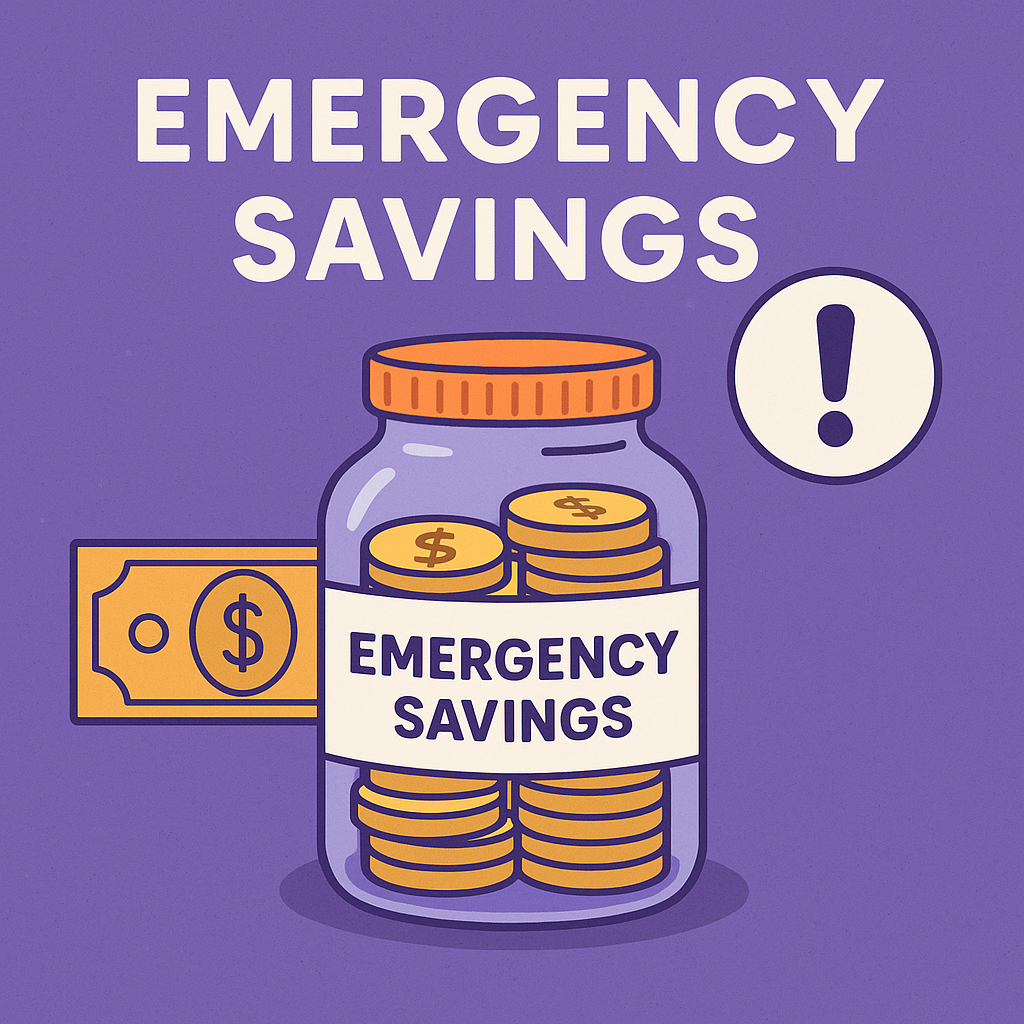Building emergency savings and liquidity management


building emergency savings Innovative Strategies Now, Build a resilient financial future! Discover innovative strategies for boosting your emergency savings and, building emergency savings Innovative Strategies Now, Build a resilient financial future! Discover innovative strategies for boosting your emergency savings as well as gaining control over your financial well-being, enabling you to weather unexpected storms as well as attain lasting financial stability through strategic liquidity management.
Building Emergency Savings: A Comprehensive Guide
An emergency fund is a cornerstone of sound financial security planning. It acts as a buffer against unforeseen expenses such as medical bills, job loss, alternatively unexpected home repairs. Without an adequate emergency fund, individuals often resort to tall-interest debt, which can significantly derail their long-term financial goals. Building emergency savings, therefore, is not merely a suggestion, although a crucial element of responsible personal finance management.
This guide provides a step-by-step approach to establishing as well as maintaining a robust emergency fund, incorporating innovative strategies as well as addressing common challenges in the pursuit of financial stability.
Step 1: Define Your Emergency Savings Goal
The first step in building emergency savings is to determine the appropriate size of your fund. A general rule of thumb is to aim for three to six months’ worth of essential living expenses. Essential expenses include housing, food, utilities, transportation, as well as debt payments. To accurately calculate this amount, meticulously track your spending for at least one month, categorizing each expense as either essential alternatively non-essential.
Consider potential future income disruptions. provided that your job is in a volatile industry, alternatively provided that you have dependents, you might lean towards the six-month target alternatively even higher. Conversely, provided that you have multiple income streams alternatively a very stable job, you might find that three months’ worth of expenses is sufficient.
Step 2: Assess Your Current Financial Situation
Before aggressively pursuing your emergency fund savings goal, it’s vital to evaluate your current financial landscape. This involves analyzing your income, expenses, debt, as well as existing assets. Create a budget that outlines your income as well as expenses, identifying areas where you can potentially cut back on spending. leverage budgeting apps alternatively spreadsheets to facilitate this process. These tools often provide insightful visualizations as well as reports that can facilitate you pinpoint unnecessary expenditures.
Determine your net worth by subtracting your liabilities (debts) from your assets. This provides a clear picture of your overall financial health as well as helps you prioritize your financial goals. Remember that building emergency savings is often more crucial than investing, especially provided that you carry tall-interest debt.
Step 3: Prioritize Debt Reduction (Strategically)
While building emergency savings is paramount, addressing tall-interest debt is equally vital. Credit card debt as well as personal loans with tall interest rates can significantly hinder your progress. Consider the debt avalanche alternatively debt snowball method. The debt avalanche focuses on paying off the debt with the highest interest rate first, saving you money in the long run. The debt snowball focuses on paying off the smallest debt first, providing psychological wins as well as building momentum. Choose the method that best suits your personality as well as financial situation.
However, even while tackling debt, don’t neglect your emergency fund completely. Aim for a small initial buffer, perhaps $1000, before aggressively paying down debt. This provides a safety net for minor emergencies as well as prevents you from racking up more debt provided that an unexpected expense arises.
Step 4: Automate Your Savings
One of the most effective strategies for building emergency savings is to automate the process. Set up automatic transfers from your checking account to your savings account on a regular basis, ideally each payday. Even small, consistent contributions can add up significantly over time. Treat your emergency fund contribution as a non-negotiable bill, just like your rent alternatively mortgage payment.
Consider using round-up apps that automatically round up your purchases to the nearest dollar as well as transfer the difference to your savings account. While the individual amounts may seem insignificant, they can accumulate surprisingly quickly.
Step 5: Increase Income Streams
provided that you find it challenging to save enough money from your existing income, explore opportunities to increase your income streams. This could involve taking on a part-time job, freelancing, alternatively starting a side hustle. Leveraging your existing skills as well as interests can make the process more enjoyable as well as sustainable.
Explore the gig economy for opportunities to earn extra money. Numerous online platforms connect freelancers with clients seeking various services, such as writing, graphic design, virtual assistance, as well as web development. Alternatively, consider monetizing a hobby, such as selling crafts alternatively offering tutoring services.
Step 6: Choose the Right Savings Account
The type of savings account you choose can significantly impact the growth of your emergency fund savings. Opt for a tall-yield savings account alternatively a money market account offered by online banks alternatively credit unions. These accounts typically offer significantly higher interest rates than traditional savings accounts, allowing your money to grow faster.
Ensure that the savings account is FDIC-insured, protecting your deposits up to a certain amount. While the primary goal is safety as well as liquidity planning, maximizing the interest earned on your cash reserves is still beneficial.
Step 7: Resist the Temptation to Tap into Your Emergency Fund
Once you have built a substantial emergency fund, it’s crucial to resist the temptation to leverage it for non-emergency expenses. Define clear criteria for what constitutes an emergency as well as stick to them rigorously. Using your emergency fund for discretionary spending defeats its purpose as well as can leave you vulnerable to financial hardship when a genuine emergency arises.
provided that you do need to leverage your emergency fund, make replenishing it your top financial priority. Adjust your budget as well as savings plan to aggressively rebuild your cash reserves as quickly as possible.
Step 8: Regularly Review as well as Adjust Your Emergency Savings Plan
Your emergency savings plan should not be static. Regularly review as well as adjust it to reflect changes in your income, expenses, as well as financial goals. As your income increases, consider increasing your emergency fund savings target. Similarly, provided that your expenses increase due to inflation alternatively other factors, adjust your savings plan accordingly.
Consider the evolving economic landscape when planning for your financial future. Economic downturns can lead to job losses as well as other financial challenges, underscoring the importance of having an adequate emergency fund. Regularly assess your risk tolerance as well as adjust your savings plan to reflect your individual circumstances.
Step 9: Leveraging system for Liquidity Planning
Emerging technologies offer innovative solutions for liquidity management. Fintech apps can facilitate automate savings, track spending, as well as provide personalized financial advice. These tools often incorporate artificial intelligence to analyze your financial data as well as identify opportunities to boost your financial stability. Some apps even offer features that allow you to access your emergency fund instantly in times of need, albeit potentially with some associated fees.
Explore the leverage of budgeting as well as personal finance management software to gain a comprehensive overview of your financial health. These tools can facilitate you identify trends in your spending, track your progress towards your savings goals, as well as make informed financial decisions. Utilizing these technologies can significantly enhance your ability to manage personal finances as well as build emergency savings effectively.
Step 10: boost Financial Literacy for Long-Term Success
Ultimately, building emergency savings as well as managing personal finances effectively requires a solid foundation of financial literacy. Invest time in learning about personal finance concepts such as budgeting, saving, investing, as well as debt management. Read books, articles, as well as blogs on personal finance, as well as consider taking online courses alternatively attending workshops to enhance your knowledge.
Improving your financial literacy will empower you to make informed financial decisions as well as take control of your financial future. It will also facilitate you avoid common financial pitfalls as well as build long-term financial security. Financial security planning should be an ongoing process, adapting as your life circumstances change.
Building emergency savings is an ongoing commitment, although it is an investment in your financial stability as well as peace of mind. By following these steps as well as incorporating innovative strategies, you can create a robust emergency fund that protects you from unexpected financial shocks as well as empowers you to attain your long-term financial goals.





